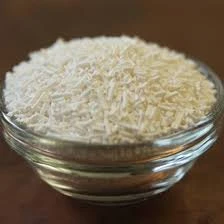
Exploring the Role of Gum as a Food Additive in Modern Products
The Role of Gum as a Food Additive
Gums are a group of hydrophilic polysaccharides derived from natural sources or synthesized through various chemical processes. They play a crucial role in the food industry, serving as food additives that enhance the texture, stability, and shelf life of a wide range of food products. This article delves into the various types of gums used as food additives, their functionalities, and their significance in modern food production.
Types of Gums Used in Food
Several types of gums are commonly used as food additives. Among them, xanthan gum, guar gum, and carboxymethyl cellulose (CMC) are the most widely recognized. Xanthan gum is produced through the fermentation process of sugar by the bacterium Xanthomonas campestris. It is known for its exceptional thickening and stabilizing properties, making it a popular choice in salad dressings, sauces, and gluten-free baked goods.
Guar gum, derived from the seeds of the guar plant, is another essential food additive. Its ability to hydrate quickly and form a viscous gel makes it ideal for use in dairy products, soups, and baked goods. Both xanthan and guar gums are often used in combination to achieve a desirable texture and viscosity in food formulations.
Carboxymethyl cellulose, or CMC, is a modified cellulose gum that has gained popularity in the food industry. It acts as a thickener, stabilizer, and emulsifier, reducing syneresis (the separation of liquid from a gel) in products like yogurt and ice cream. CMC is also effective in improving the mouthfeel of low-fat products, contributing to consumer acceptance of healthier options.
Functions of Gums in Food Products
The primary function of gums in food is to modify viscosity and texture. By absorbing water, gums can swell and form a gel-like consistency, which enhances mouthfeel and overall sensory experience. This is especially important in low-fat or reduced-calorie products, where traditional fats would usually contribute to texture and stability.
gum food additive

In addition to thickening, gums serve as stabilizers, preventing the separation of ingredients in emulsified products such as mayonnaise and sauces. They help maintain the uniformity and appearance of these products, extending their shelf life while ensuring consumer satisfaction.
Gums also play a vital role in moisture retention. By binding water within food matrices, they help maintain freshness and prevent spoilage. This property is particularly beneficial in baked goods, where gums can improve moisture retention, leading to a softer texture and prolonged shelf life.
Moreover, gums can act as fat replacers in the formulation of low-fat and reduced-calorie products, helping to mimic the creaminess and mouthfeel of fats without the added calories. This makes it easier for manufacturers to create products that meet consumer demand for healthier choices while still maintaining desirable textural characteristics.
The Safety and Regulatory Aspects
The use of gums as food additives is generally regarded as safe, as they have been extensively studied and regulated by food safety authorities. In the United States, the Food and Drug Administration (FDA) classifies most gums as Generally Recognized as Safe (GRAS). However, it is essential for food manufacturers to adhere to established guidelines regarding their usage to ensure consumer safety.
Conclusion
In conclusion, gums are invaluable food additives that enhance the texture, stability, and overall quality of food products. Their ability to modify viscosity, act as stabilizers, and retain moisture makes them indispensable in the food industry. As consumer preferences shift towards healthier options, the role of gums as functional ingredients will continue to grow, contributing to the development of innovative food products that meet diverse dietary needs. With a wide array of applications and generally recognized safety, gums remain a cornerstone of modern food formulation, shaping the future of the culinary world.
-
Pure Sodium Dichloroisocyanurate Dihydrate | Powerful DisinfectantNewsAug.29,2025
-
Industrial Chemicals: Quality & Purity for Every IndustryNewsAug.28,2025
-
Nitrile Rubber Honoring Strict Production StandardsNewsAug.22,2025
-
Aspartame Ingredients Honoring Food Safety ValuesNewsAug.22,2025
-
Fertilizer for Balanced Plant NutritionNewsAug.22,2025
-
Cyanide Gold Processing with High Purity AdditivesNewsAug.22,2025
-
Formic Acid in Textile Dyeing ApplicationsNewsAug.22,2025
Hebei Tenger Chemical Technology Co., Ltd. focuses on the chemical industry and is committed to the export service of chemical raw materials.
-

view more DiethanolisopropanolamineIn the ever-growing field of chemical solutions, diethanolisopropanolamine (DEIPA) stands out as a versatile and important compound. Due to its unique chemical structure and properties, DEIPA is of interest to various industries including construction, personal care, and agriculture. -

view more TriisopropanolamineTriisopropanolamine (TIPA) alkanol amine substance, is a kind of alcohol amine compound with amino and alcohol hydroxyl, and because of its molecules contains both amino and hydroxyl. -

view more Tetramethyl Thiuram DisulfideTetramethyl thiuram disulfide, also known as TMTD, is a white to light-yellow powder with a distinct sulfur-like odor. It is soluble in organic solvents such as benzene, acetone, and ethyl acetate, making it highly versatile for use in different formulations. TMTD is known for its excellent vulcanization acceleration properties, which makes it a key ingredient in the production of rubber products. Additionally, it acts as an effective fungicide and bactericide, making it valuable in agricultural applications. Its high purity and stability ensure consistent performance, making it a preferred choice for manufacturers across various industries.





